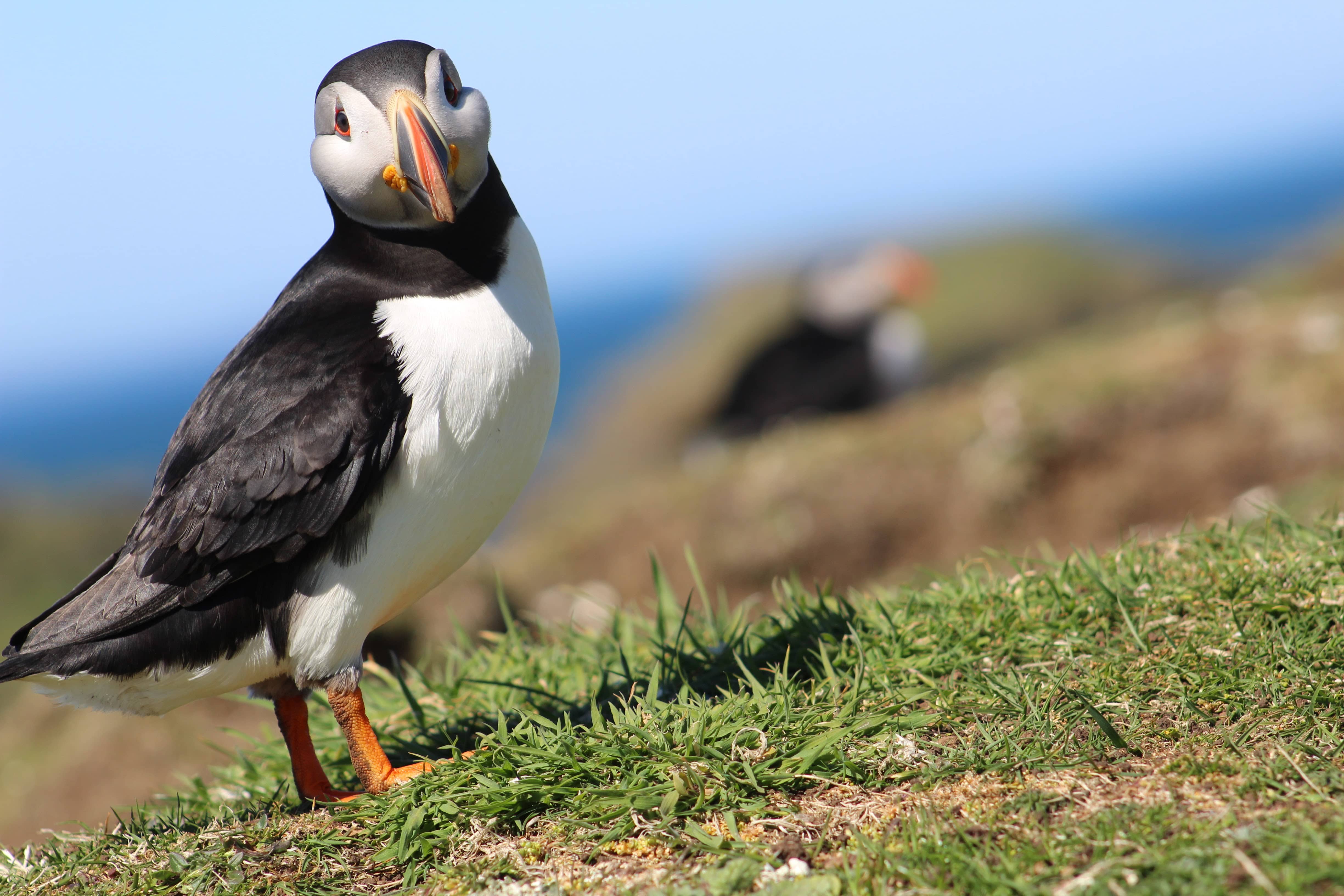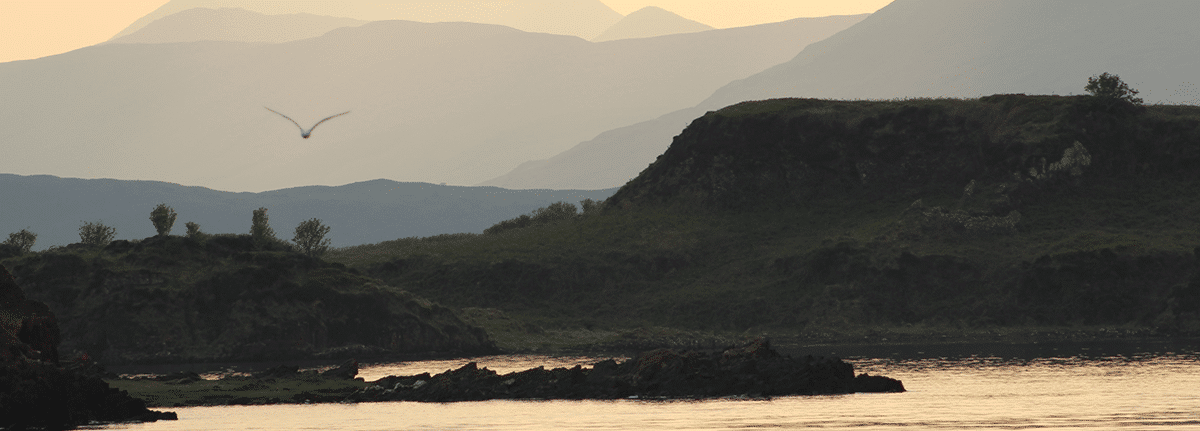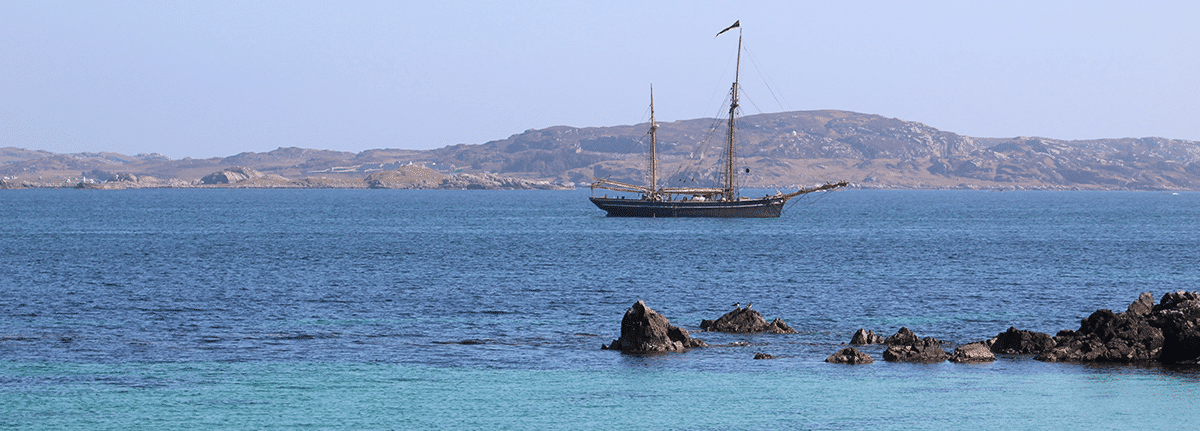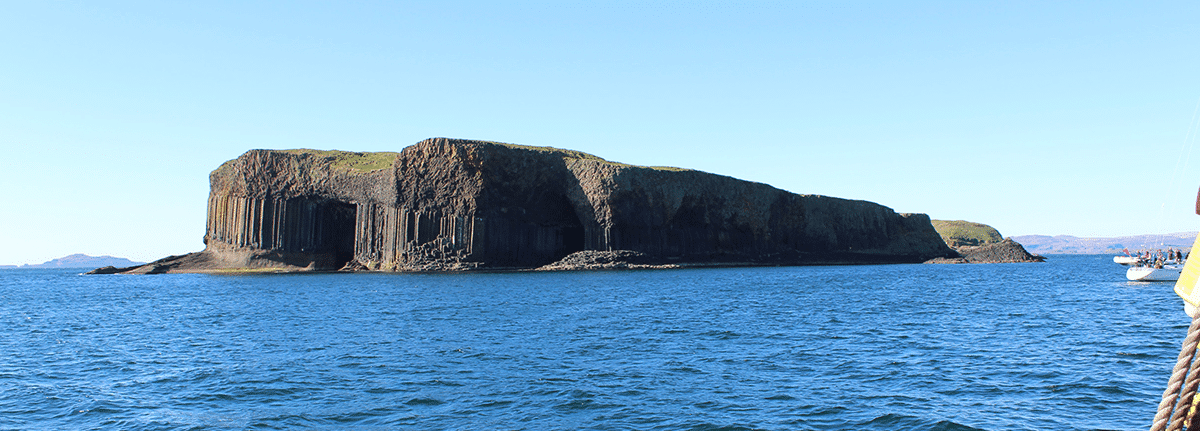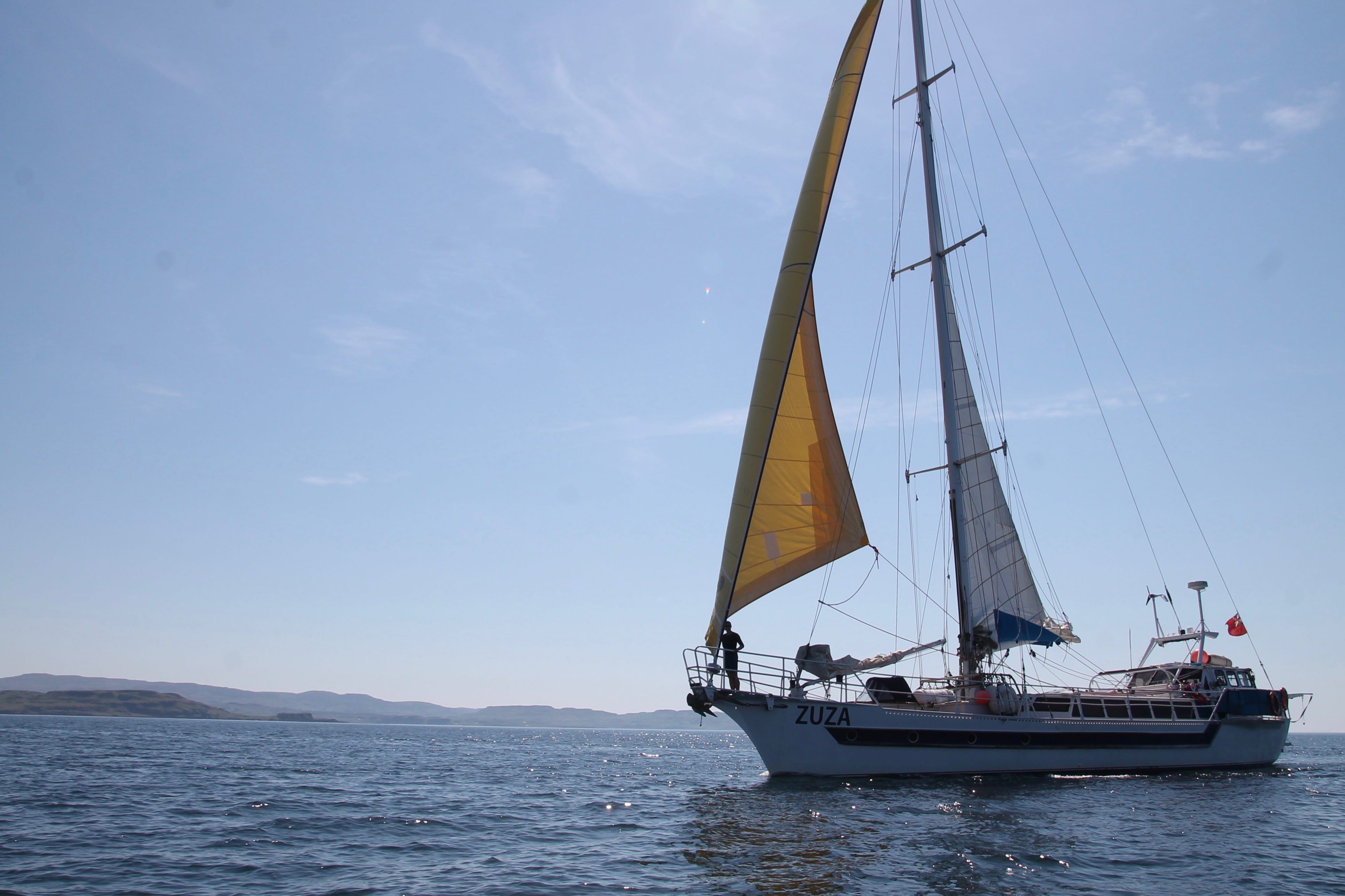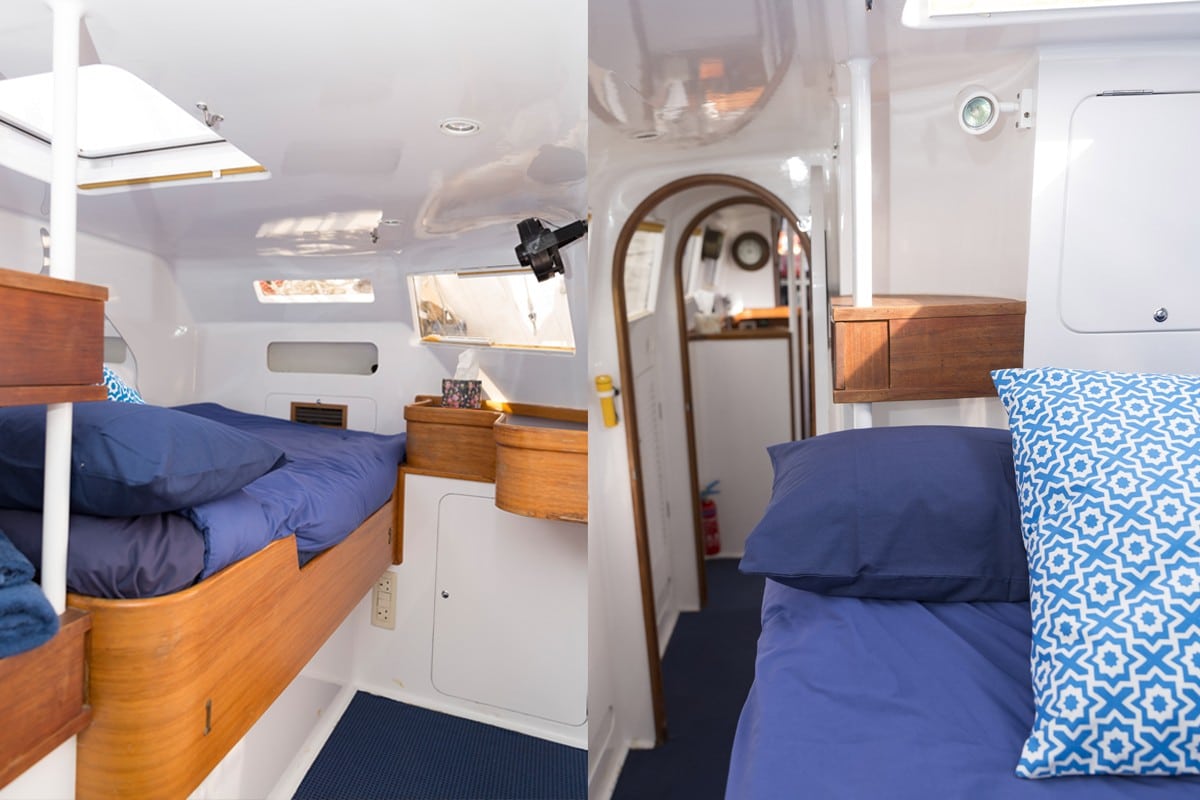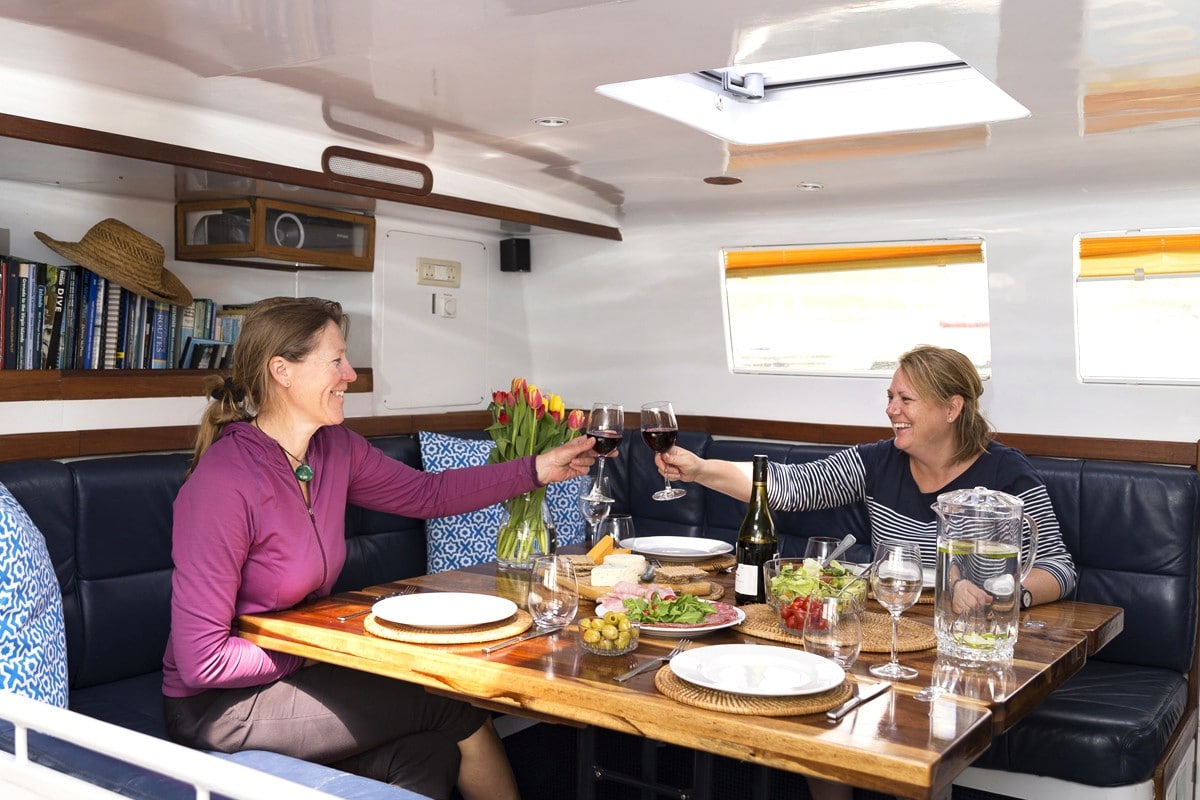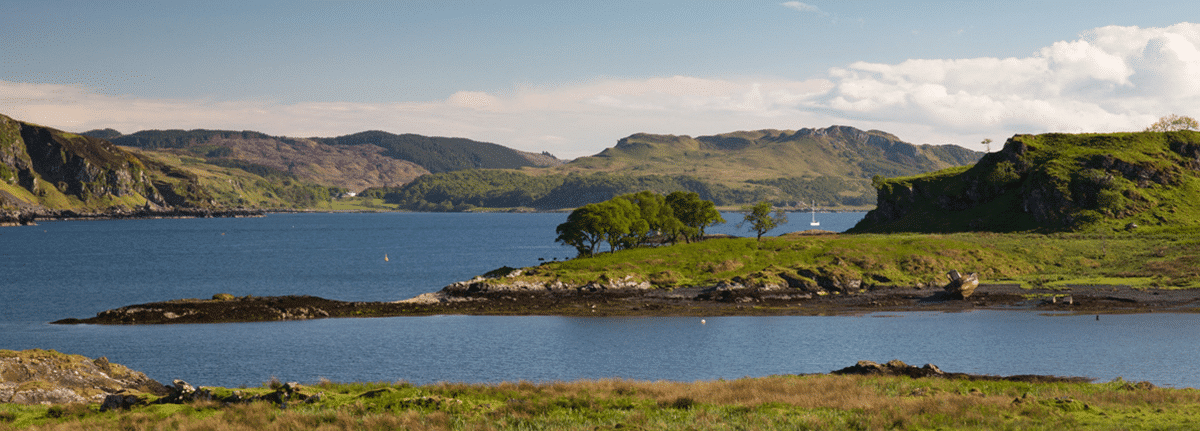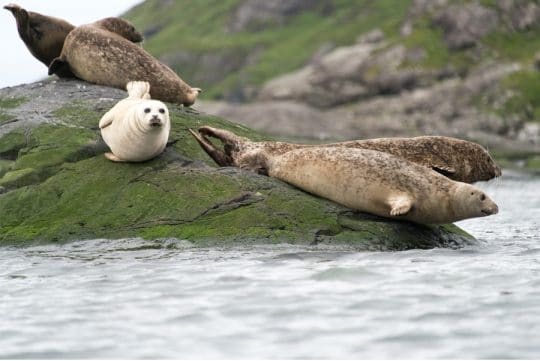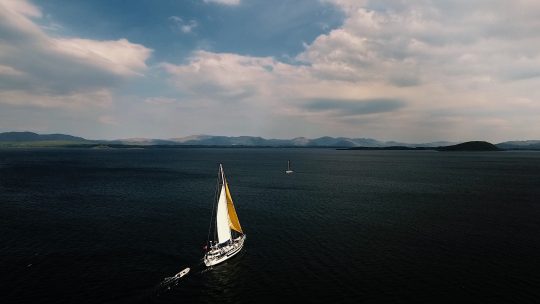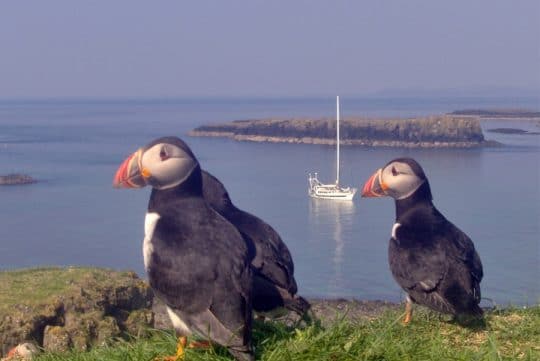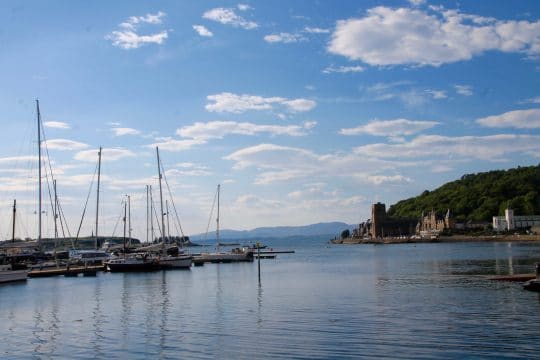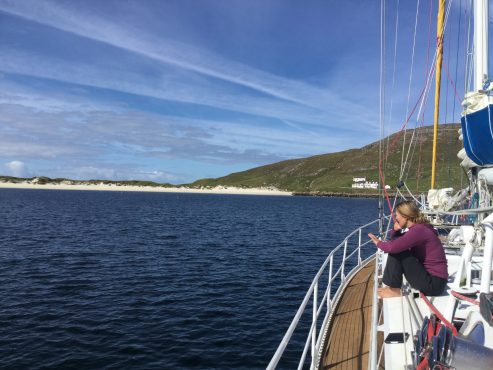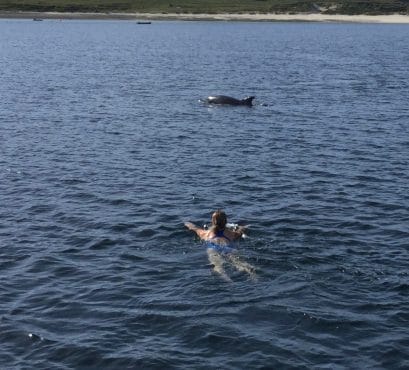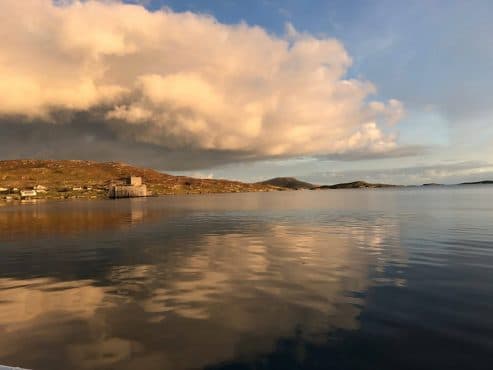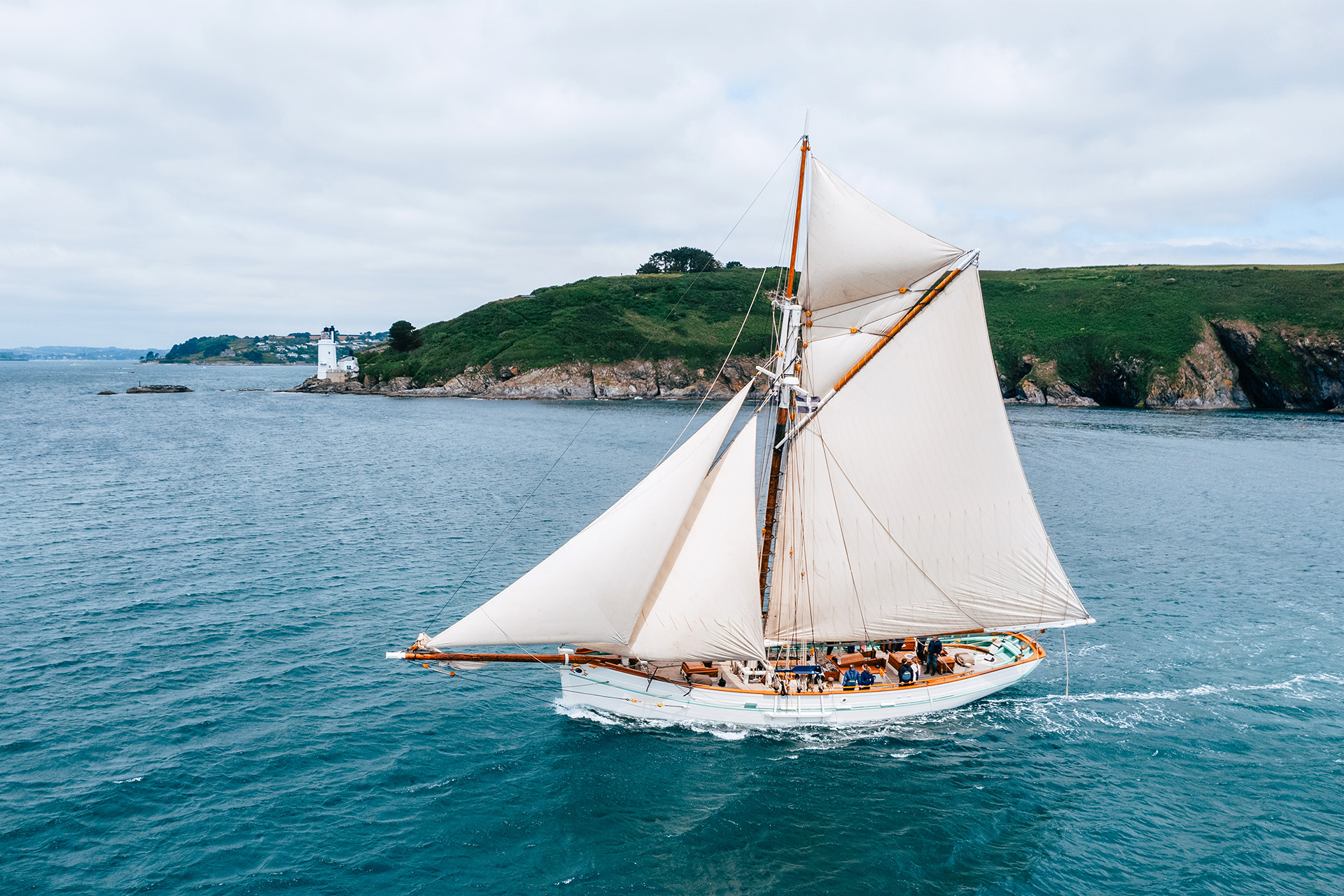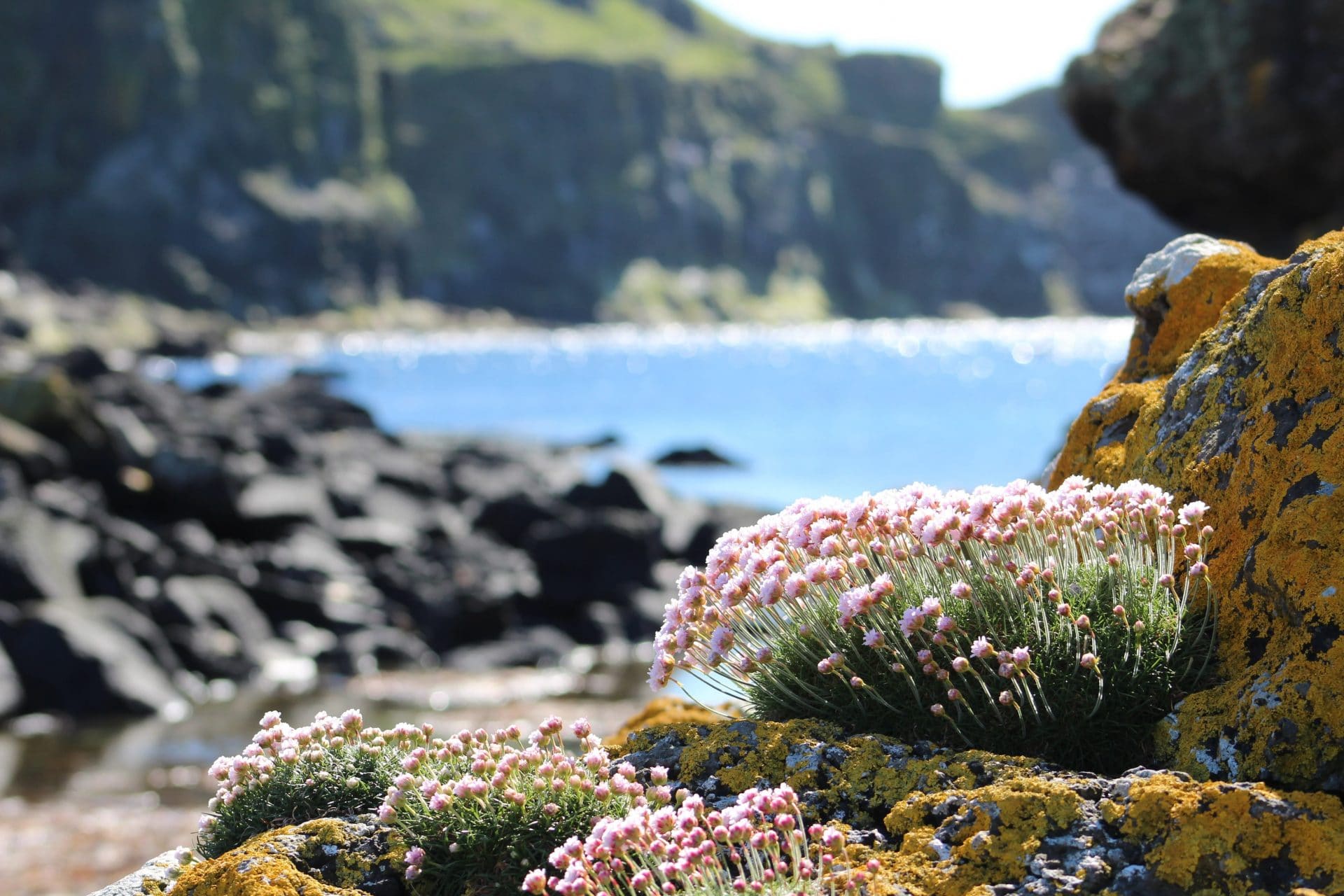
Collectively known as the Small Isles, this pretty little archipelago plays host to a vast amount of wildlife – and each island in this collection is very different from the next. Just 153 people live on these islands and transport links are tenuous, making them quite isolated. They’re perfect territory for boat exploration; many of our cruises will show you around by water and you’ll also be able to explore on foot.
Rum
Rum is the largest of the Small Isles, which should make it a Medium Isle, but that doesn’t quite have the same ring. Rum is 40 square miles in area, and conceals the main village of Kinloch to the east, where just over 30 people reside and a small primary school educates the handful of island children.
The rest of the island is uninhabited by humans but a huge population of red deer are free to roam, studied intensely by field ecologists in various areas of academia. Watch out for them (the deer, not the field ecologists) and the wandering wild goats and ponies too.
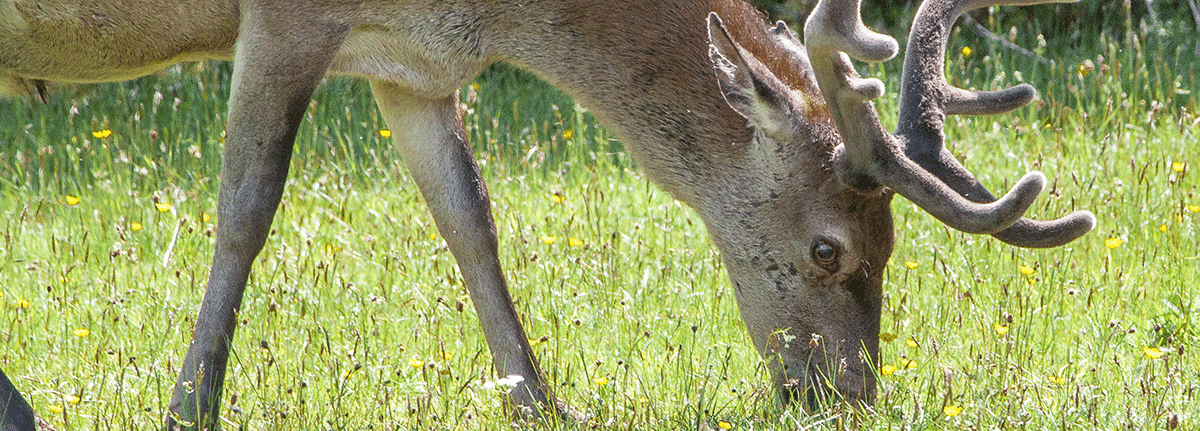
Eigg
One of Eigg’s greatest qualities is its eco-friendliness: it generates all of its power from reusable sources and has a traffic light system of power usage, so its 105 inhabitants know when the reusable power is at its most abundant (think windy days or blazing sunshine) and when its at its most scarce.
This clean energy powers a microbrewery, producing 7 distinct ales and lagers, and a restaurant, bar and several craft shops – quite remarkable for an island of relatively small inhabitancy and stature. It’s just 12 miles square.
Historically, Eigg has been tossed and tumbled through the hands of various clans, religious sects, invaders and wealthy landlords – relics from these eras including churches and chapels can still be found dotted all over the island. Eigg’s tumulus history makes for some fascinating reading. At present, Eigg belongs to its own heritage trust, but political murmurings still cause the occasional tremor, as natives feel they are unfairly treated in comparison to the friends and family of the trustees.
Muck
Muck is the baby in the family of the Small Isles. It’s just 2.2 square miles; less than the distance from the Houses of Parliament to the British Museum! She’s famous for her porpoises and seals – even the name ‘muck’ is derived from ‘mouch,’ meaning ‘swine’. The ancient word for porpoise was ‘mereswine,’ so the island was likely to have been named after its first maritime inhabitants – a rarity in terms of ancient place names, which normally derive from geographic features.
Muck has a permanent population of 27 people, and has several holiday cottages and a hotel. It’s the only inhabited island without a post box.
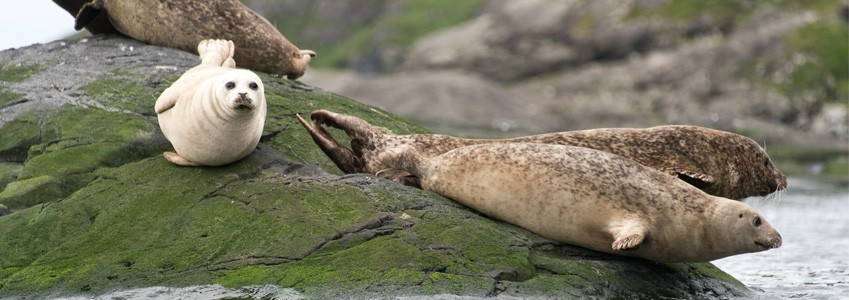
Canna
Canna’s population could easily double if a couple of small tourist boats arrived on the island at once; she’s home to just 18 people! Being mile across and 4 miles wide means Canna is long and thin, which makes for an amazing coastline habitat for a plethora of wild birds, including peregrine falcons and merlins. Rare butterflies reside inland, which benefits from relatively little human footfall.
Canna harbours some of the best-preserved Bronze Age relics such as huts, walls and pottery – a perfect place for archaeology lovers to engage in some of their own detective work.
She’s linked by land to the isle of Sanday, which is walkable when the tide permits.

